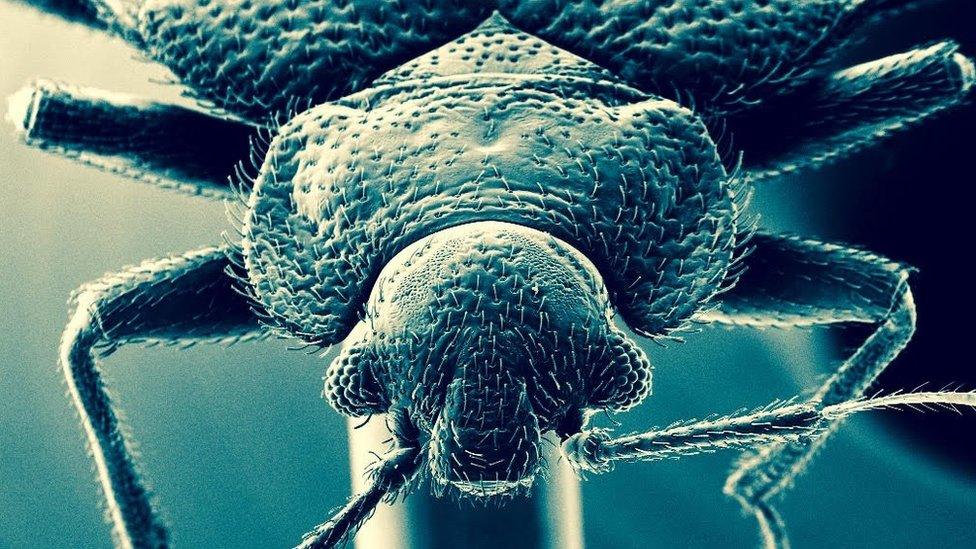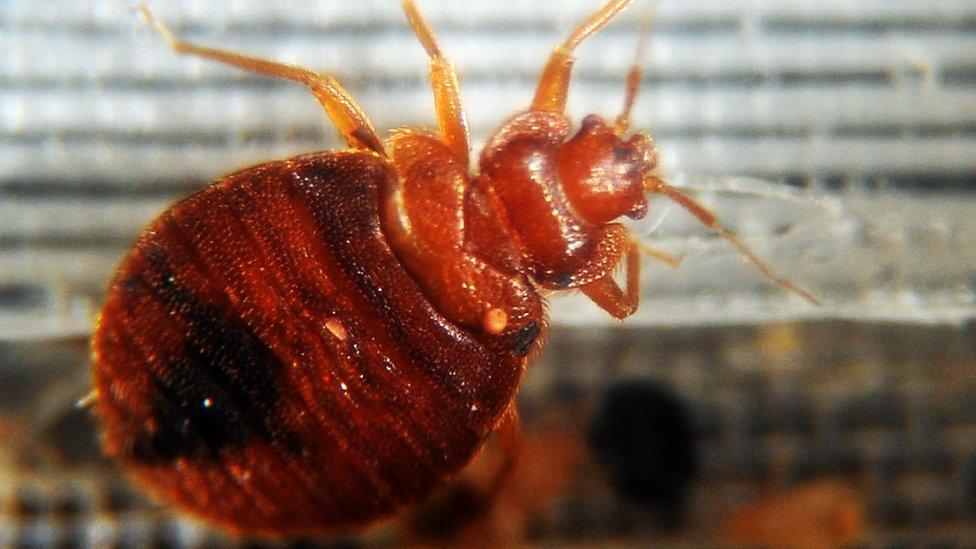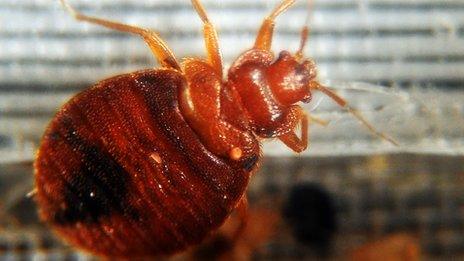Bed bugs' thick skins beat insecticide
- Published

Bed bugs might be developing thicker "skins" to help them survive exposure to common insecticides.
Human population growth and international travel have helped the bug become a source of irritation in hotel rooms around the world.
Insecticides are the most common way to kill them, but they have rapidly developed resistance.
Now, an Australian team writing in Plos One journal thinks it has found one of the reasons why.
Killing resistant strains of the bug may require concentrations 1,000 times larger than those needed to eliminate non-resistant creatures.
Infestations have spread to homes and offices and the bugs are extremely hard to get rid of once they gain a foothold.
They can survive for up to a year without feeding and a single fertilised female can infest a whole building.
While they were a common part of life in the 1940s and 50s, the introduction of DDT and other powerful insecticides initially restricted their populations.

Bed bugs have shown the ability to quickly develop resistance to insecticides
But there was a resurgence as the bugs quickly developed resistance to DDT and subsequent classes of chemicals deployed to kill them.
Like all insects, bed bugs are covered by an exoskeleton called a cuticle.
Using scanning electron microscopy, David Lilly from the University of Sydney and colleagues compared the thickness of cuticles taken from bed bugs that were resistant to insecticides with cuticles from those that were more easily killed by insecticides.
The results showed that the thicker the cuticle, the more likely the bugs were to be resistant to insecticides.
"One way bed bugs beat insecticides is by developing a thicker 'skin'," said co-author Mr Lilly, a PhD candidate.
The researchers say the results could explain why bed bug infestations are so difficult to control and could assist the search for more effective strategies.
"If we understand the biological mechanisms bed bugs use to beat insecticides, we may be able to spot a chink in their armour," said David Lilly.
However, there may be other ways that the organisms beat widely used bug sprays. Another team of scientists in the US thinks that bugs there may be able to produce large quantities of enzymes that break down toxic chemicals, including insecticides.
- Published28 January 2016
